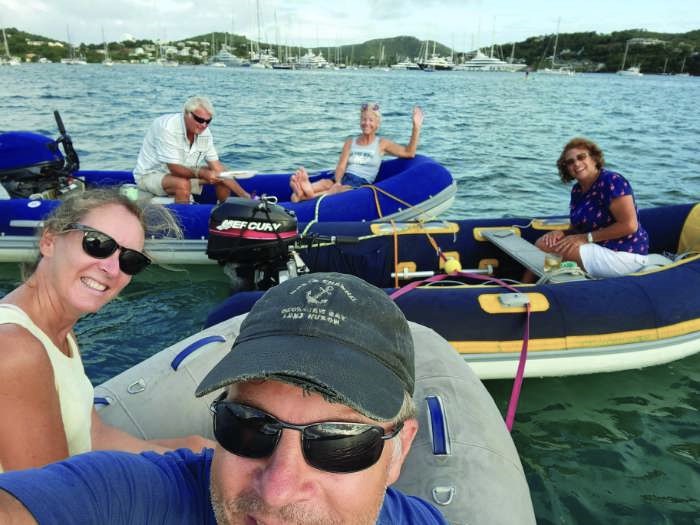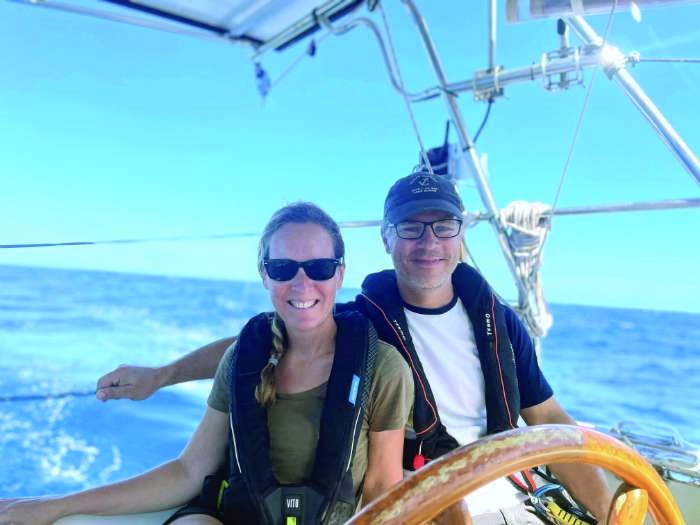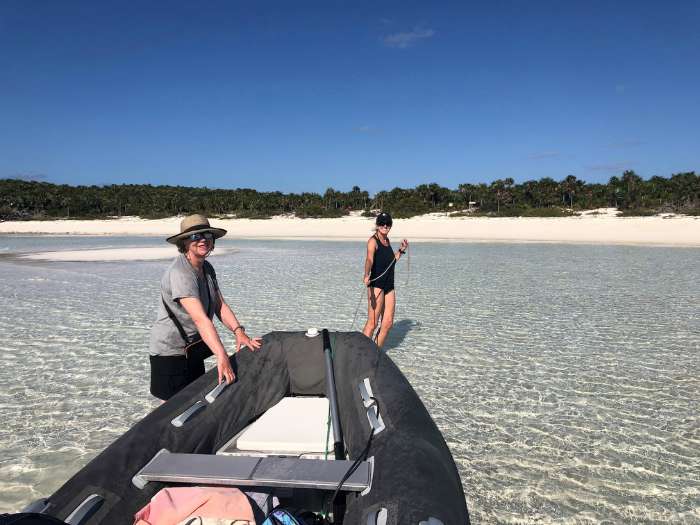Seasoned Sailors Share 10 Hard-Earned Tips for Long-Distance Cruising
Ten years ago, my husband and I were preparing our “new to us” Gozzard 44 for our first southbound cruise. Belle Bateau had been to the Caribbean with her previous owners, but we were newbies to long-distance cruising. We joined the Severn Seas Cruising Association, attended GAMs, networked with seasoned cruisers, read fiction, studied nonfiction, and had our boat refit at the original manufacturer over the winter.

When we left in mid-October 2015, we were excited and hopeful. When we returned in mid-May 2016, we felt accomplished and wiser. We also admitted that there were things we would do differently “next time,” which for us was a northbound journey in June 2023.
If you are preparing yourself and your boat for warmer waters this winter, consider these valuable insights from four seasoned cruising couples who have recently made that southbound trek.
1. Navigation and route planning: Electronic charts on phones and a boat’s chartplotter should be updated regularly, but especially before heading south. Cruisers like redundancy, such as using Navionics on a tablet in case their chartplotter glitches. Julie Thorndycraft on Gaviidae says, “We use Navionics running on Raymarine but also found that AquaMaps connected via a dongle with our Raymarine equipment was a lifesaver for going down the ICW with Bob423’s tracks and Army Corps of Engineers’ depths.” She also uses several guides, including Waterway Guide, Boat Galley Quick Reference and ICW Cruising, and the Noforeignland app for anchorages and marinas.
2. Weather apps and communications: All four cruisers mentioned using Chris Parker and PredictWind, with some installing PredictWind Offshore as their primary routing and weather tool. Again, redundancy is recommended, with other options for comparing weather forecasts, such as SailGrib and NOAA. Apps and services can have a learning curve, so advanced practice is needed. SSCA Commodore Beth VandeGeijn on Lasata advises, “Pick a few and use them regularly before you depart. We have Starlink for communications (global plan), Single Sideband radio, and Garmin InReach, three independent ways of communicating while offshore.”
Starlink is a popular choice for internet access, but some question its reliability when far offshore. Iridium Go and Garmin InReach can be viable options. Both have SOS features and can be relocated to a liferaft in an emergency, which is not the case with Starlink.
3. Boat repairs: Cruisers tend to practice routine maintenance and prefer replacing aging parts before they fail. Salt and sun are both hard on boats. Mike Cruthers on Monarch insists, “Everything does fail eventually, so why not replace it now? Better to make a repair in Annapolis where someone can bail me out if I mess up a project.” It can be helpful to read post-race or rally reports about what parts failed or ask other cruisers what they’ve encountered. Steering, rigging, through-hulls, and sails should be inspected for replacement or repair, in addition to having your engine professionally serviced.

4. Spare parts and tools: Many sailors admit to having too many tools while also worrying that they aren’t carrying enough spares. We often hear stories about cruisers joyfully loaning, giving, or trading with one another, especially in remote areas where parts or tools are scarce. The usual spares include belts, water pumps, impellers, fuel filters, oil and oil filters, coolant, float switches, and zincs, as well as sheets, blocks, lines, and boat hooks. It’s also advisable to carry parts that are unique to your boat. Good record keeping is critical for knowing what spares and supplies you have onboard. Cruisers often carry jerry cans of diesel, water, and gasoline, depending on intended destinations and duration.
5. Safety: It’s essential to routinely check safety equipment and change batteries on strobes and other gear. Most cruisers tend to have AIS (send and receive), radar, jack lines, offshore PFDs, first aid kits, and EPIRBs. If venturing further offshore, some carry liferafts and personal locator beacons. Enrolling in a Safety at Sea seminar is highly recommended, as is CPR and first aid training.
6. Dinghy: A healthy dinghy, outboard, and anchor are essential for enjoying the cruising life. Dinghies need to be locked and secured, even when on davits, depending on your location. Knowing the tidal swings for your intended destination is important as you select your anchor and total weight of dinghy (if carrying ashore may be required).

7. Provisions: First-time cruisers often over-provision, especially with canned foods. We admit that we did! Groceries are readily available along the East Coast, especially if bikes are onboard, and many coastal towns have farmers’ markets. For the most part, Bahamian and Caribbean islands have good food supplies, though prices may be higher and selection may be limited. “The Boat Galley Cookbook” is a great resource for recipes and other helpful hints for boaters. Cruisers tend to stock a few staples so that they can make meals if weather prevents getting off the boat. Some even do a little fishing.
8. Destinations: Many cruisers get their feet wet with a season in the Bahamas, where they are comfortably close to the US. Depending on the departure point, crossing the Gulf Stream can be a relatively quick overnight passage. Upon arrival, navigating between islands is straightforward. Weather patterns are generally predictable. The sailing community is supportive, and Bahamians welcome considerate visitors.
Other cruisers prefer the variety that Caribbean islands offer, while some are quite content exploring the coastal US, including the Florida Keys and west coast.
9. To rally or not? For first-time offshore cruisers to the Caribbean, joining a rally such as the Salty Dawg may be a good idea. Michael Delage on Innisfree adds, “Because it was our first big offshore passage, we joined the Salty Dawg Rally to Antigua. We had done passages up to three days before, but not over a week, and not so far offshore. With the rally, we gained access to a lot of experienced sailors who had done the passage before, a dedicated 24/7 shoreside support team, and professional weather routing support.”
VandeGeijn on Lasata agrees, “Going with a rally is highly recommended if it’s your first passage. The Salty Dawgs do a great job with passage preparations. They offer both Northeast Coastal and DelMarVa rallies during summer months that will help prepare for the bigger offshore rallies to the Bahamas and Caribbean in the fall.”

10. Final advice: Delage cautions, “Rallies are helpful, but they are not a substitute for all the work you have to do on your own. It’s more of a cross-check that you haven’t forgotten anything and access to advice when you need it. Even if you don’t join a rally, buddy-boating or sailing in groups can be a good idea.”
And remember, the Chesapeake Bay is a perfect place to practice longer-term cruising. Two weeks or more on the Bay, including overnight passages, will most likely provide some challenging conditions to test your abilities, your crew, and your boat. So take advantage of the Chesapeake and go explore!
About the author: Captain Cheryl Duvall is a USCG Licensed Master, Inland 100 GRT. When she isn’t sailing Belle Bateau, you might find her at the helm of Watermark’s Miss Anne in Annapolis. Email her at [email protected].
Find more cruising articles.




